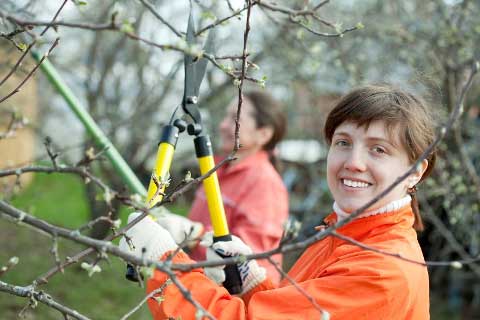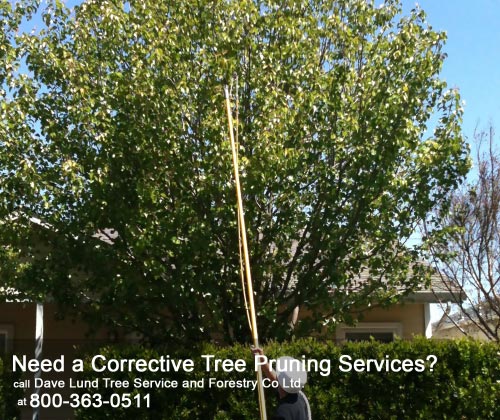
Pruning is critical to a tree’s longevity, health, safety and appearance. Proper tree pruning is important because trees add aesthetic beauty to your property and increase its value. Neglecting a tree leads to potential hazards and liability, suffering tree health, increased long-term maintenance, and decreased property value. Trees are healthier and more attractive when pruned.
Tree Pruning
Step 1 – Assess the tree
Before you prune, it’s important to assess and understand why you’re doing it. While some pruning tasks can be done on your own, pruning large trees usually requires help.
Step 2 – Thin the tree
A dense tree that blocks your view should be thinned out. You can do this by removing entire branches that are too overgrown. Cut at the joints to remove the heaviness from of the canopy. This will help you see through the tree. Be careful not to take out too much from the tree as this could ruin the entire shape.

Step 3 – Prune branches
Prune any branches that cause distractions. The branches can either be low enough no obstruct your walkway or high enough to rub your roof.
Pruning large branches requires three steps that protect the back of your tree by preventing the branch from splitting. The first step will require you to make a small wedge shaped undercut on the branch side of the stem.
The second step is to move a little further from the branch and, starting from the top, cut through the branch. The undercut you made in the first step will prevent a split from affecting the back of your tree.
The third step will require you to make a cut on the branch side of the stem collar. Make sure the length of the stub is as short as possible.
Step 4 – Shape the tree
For a more rounded, neat shape, prune all the branches that seem to stick out more than others.
Pruning tips

- Keep your pruning tools clean and sharp
- Prune as little as possible – never prune more than 25% of your tree at a time as this may compromise health and the protection of your tree against fungus and infestation. Spread out pruning over the years and even then prune only as much as you absolutely need.
- Remove all unhealthy limbs, dead and dying limbs, and crossing branches.

Not all seasons are suitable for pruning your tree. You can prune your tree during the dormant season, late fall or during winter. However, you should remove dead or unhealthy branches at any time. Most pruning activities require professional help. With over 36 years of serving the Ontario and the greater York Region, our team is highly qualified to satisfy your pruning needs. Call us today at 1-800-363-0511 for inquiries or to schedule a service.

